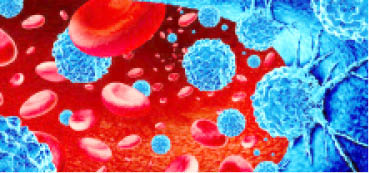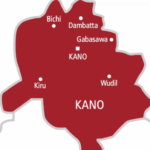Late presentation for medical care by patients is one of the major challenges for effective treatment of leukaemia, a type of blood cancer in Nigeria. Medical experts say many of them find it difficult to cope after being exposed to the first dose of chemotherapy treatment (use of drugs to destroy cancer cells) due to funds.
Explaining the situation further, a consultant paediatrician at the Federal Medical Centre, Bida, Niger State, Dr Bello AbdulHafeez, said “After the chemotherapy, by this time, they are out of money. You see your patients dying right in front of you for lack of money or laboratory support.
“This is the usual picture we see but there are few centres in Nigeria that are doing very well and able to go far with patients with leukaemia like Obafemi Awolowo University Teaching Hospital (OAUTH), University of Benin Teaching Hospital (UBTH) and the National Hospital, Abuja with care facilities for leukaemia”.
He said leukaemia, a lymphoproliferative disorder, is mainly a malignancy of the white blood cells, which leads to elaboration of immature white blood cells in the system.
FG to Nigerians: Accept tariff hike or face total blackout
NIGERIA DAILY: How Fuel Scarcity Threatens Normal Life In Nigeria
As a malignancy, it comes with so many other complications because of the elaboration of immature cells, which are the real causes or challenges that an individual with leukaemia has.
Dr Abdulhafeez said the causes are not definite but there are a myriad of them. “First thing is that it is associated with a genetic factor and some people are more predisposed because of the composition that they have. Another thing is that it has to do with exposure to certain chemicals like benzene for those working in rubber companies and radioactive substances like people who experienced the Hiroshima Nagasaki war coming down with a high rate of leukaemia among the population. Likewise, it can be caused by exposure of children and adults to nuclear plants.
“Anecdotally, people have not been able to substantiate the connection between leukaemia and telecommunication masts because the rays emitted from masts are different from and not exactly the same from what is emitted from radiation. But studies have not been done and I can’t say with certainty what the link is”.
Symptoms
The medical consultant said “What we usually use for the signs is the possibility of the person having 4-5 P’s. This includes a person having the tendency to have body pains, parezia, which means fever, petechiae, which is a sign of bleeding in the body and sometimes they may have things like anaemia, which means their blood levels comes down because of bleeding from the nostrils and mouths. It could also be passage of dark coloured urine occasionally. The common complication is that the blood level keeps falling with decreases in the level of immunity because the white blood cells are now immature. Hence the individual becomes very predisposed to infection. Secondly is that their blood level keeps falling, which affects all the strings of the blood cells (red and white) including platelets. There is a tendency that the person may bleed. This is however usually a challenge because most centres don’t have the facilities to give blood that would replace platelets.
Warning signs
Though this is not something that is very certain, the expert said the most common one is bleeding during regular brushing, sometimes from the nostril unprovoked. “Also passing dark coloured urine and when a child keeps having recurrent pain all the time and persistent fever despite several treatments for malaria and typhoid. Those are reasons to start thinking of leukemia.
Diagnosis
He said diagnosis is firstly clinical based on all that has been talked about. Then having a complete blood count in the laboratory where the blood cells are looked at. The red blood cells are usually elevated, the white blood cells and platelets commonly low. “Going further, we can see a nematologist, from either the paediatric or internal medicine, to examine the bone marrow to give a clear cut picture of what type of leukaemia we are talking about.
Prevention and Treatment
According to him, prevention is essentially avoiding all those risk factors including not living in areas where there are nuclear plants, or working in rubber companies or benzene emitting factories.
And for those they are genetically predisposed with a high index of suspicion, it’s better that they get tested regularly.
For the treatment, Dr Abdulhafeez noted that the mainstay of its treatment is presentation at the tertiary hospital where one can be referred properly and not at the level of primary or secondary health centres if they lack the facilities.
“Most forms of Leukaemia are treatable and some are even curable but it requires some hi-tech facilities and equipment including know-how. In most cases, individuals have survived it like the case of the Nigeria goalkeeper, Carl Ikeme, because of his exposure to well-trained personnel and good facilities. Leukaemia is not a death sentence if picked early with the appropriate treatment. It also depends on the type because they are some with good prognosis”.
He advised the people to know and understand that everything is not malaria or typhoid. “People with fever should be properly diagnosed and tested to confirm the particular condition. There is the need to stop assuming whether you have had fever for a month or done transfusion more than once.

 Join Daily Trust WhatsApp Community For Quick Access To News and Happenings Around You.
Join Daily Trust WhatsApp Community For Quick Access To News and Happenings Around You.

